
|
|
|
|
|
|
2034-2044
Ectogenesis is transforming reproductive rights
Ectogenesis – the growth of mammalian embryos in artificial environments – was first described in 1924 by British scientist J.B.S. Haldane. His essay, Daedalus; or, Science and the Future, was regarded as shocking science fiction at the time, but later proved to be remarkable in having predicted many scientific advances. Haldane was a friend of author Aldous Huxley, whose famous novel Brave New World (1932) anticipated similar developments in reproductive technology.
In 1953, a transient biochemical pregnancy was reported by Australian researchers who extracted an intact fertilised egg. It was followed by in vitro fertilisation (IVF) six years later enabling the birth of a live rabbit. The first human pregnancy through IVF occurred in 1973 – though it only lasted for a few days. A major milestone was finally reached in 1978, when Louise Brown became the first "test tube baby" having been conceived on a petri dish.
During the 1980s, IVF was condemned as immoral by religious groups, but public opinion shifted in favour of these procedures. The next few decades saw rapid development in the field. New drugs, better ovarian stimulation techniques, and improved ways to identify the best embryos, all helped in achieving higher success rates, while costs were lowered. The ability to freeze and subsequently thaw and transfer embryos also greatly improved the feasibility of IVF. By the dawn of the 21st century, it had become a mainstream medical technology. Half a million test tube babies had been born around the world by 2004 and this number increased ten-fold to reach five million by 2012.
Other developments in reproductive medicine included the first baby born to a mother with a womb transplant, reported in 2014.* Three-parent babies became possible in 2016. An even more ambitious and challenging goal lay ahead. It was almost a century since Haldane coined the term "ectogenesis" and replacing traditional pregnancies with fully artificial wombs had now become a real possibility. A number of hurdles remained – including ethical and legal considerations – but genuine progress was being made. One study introduced a mouse embryo into a lab-created uterine lining, resulting in successful implantation and growth on these engineered tissues – held on a bio-engineered, extra-uterine "scaffold." In another study, goat foetuses survived for ten days in a prototype artificial womb consisting of a machine with amniotic fluid in tanks. A third study achieved this with a human embryo, but regulations allowed only a 14-day timespan on research of this kind. These and other breakthroughs led to the first complete working animal wombs in the early 2020s.*
A further decade of pioneering work, alongside a relaxing of regulations, led to a human version in the early 2030s.** This first model demonstrated an ability to supply both oxygen and nutrients from an external source to nurture a foetus, as well as dispose of waste material. The feed incorporated an interface to function as a placenta. During clinical trials, it was made available to a small number of parents, but quickly became widespread in the decade after its introduction.*
With mainstream use having been achieved, rapid changes began to occur in society. Ectogenesis offered a new way of producing children without having to endure a lengthy, painful and potentially dangerous pregnancy cycle. Women no longer had the sole responsibility of childbirth and were free from worries about whether a certain lifestyle or environment (such as alcohol consumption) was harming the foetuses' development. Every aspect of the nine-month process could be monitored in perfect detail by the machines – ensuring a safe and efficient alternative to natural birth. For many women, their lifestyle and career prospects were transformed; a boon for gender equality. Those with damaged, diseased or removed uteri could also take advantage of the procedure. Homosexual couples and single men could also have children without having to use surrogate mothers. Yet another option now available was for pregnant women seeking an abortion to place their embryo in these artificial wombs, allowing somebody else to adopt it rather than killing off the foetus.
Many conservatives and religious groups remained opposed to this process, just as they had been for IVF – but the influence of religion was declining as the world continued to become more secular. Feminists were divided over this new definition of "motherhood" and its effect on their role in society. Meanwhile some expressed concerns that children born in this way could lack an essential bond with their mothers that other children had. However, these machines were able to use vocal recordings, movement, and other sensations to accurately simulate a natural gestation. Even greater advances would emerge in the 2050s with extensive manipulation of DNA in these wombs allowing "designer babies" for the rich.*
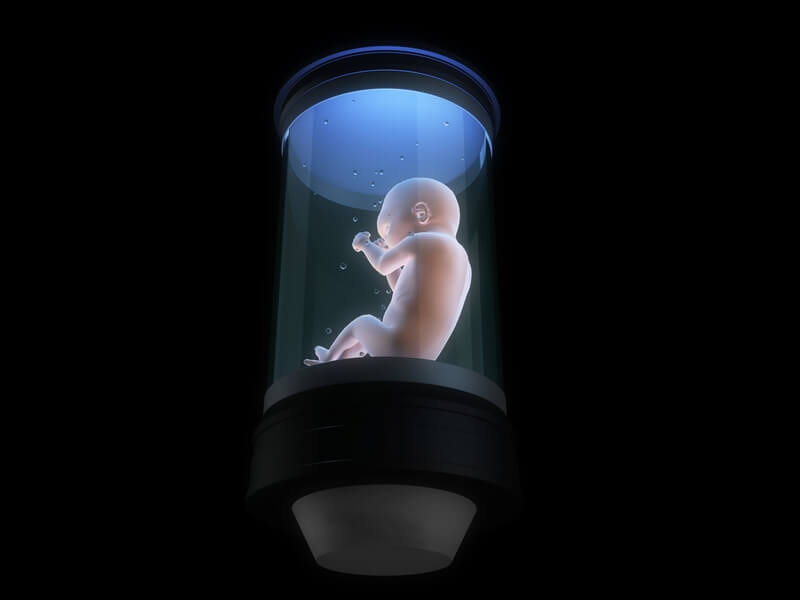
Ectogenesis: artificial womb technology | © Sebastian Kaulitzki | Dreamstime.com
2034
Start of Research Operation (SRO) for the ITER experimental fusion reactor
ITER (originally the International Thermonuclear Experimental Reactor) is a prototype fusion power plant constructed in France. As the most complex machine ever created by humans, it aims to become the first project of its kind to demonstrate the efficient and economic use of fusion reactions – the same processes that occur naturally within the Sun.
While human-made fusion had been achieved briefly and on small scales in the past, these tests resulted in a net loss of energy. By contrast, ITER is designed to produce a plasma that releases the equivalent of 500 megawatts (MW) of power during much longer pulses than any previous machine.
Built at a cost of €27 billion (US$30 billion), with construction spanning decades, ITER is among the biggest science projects ever undertaken, second only to the International Space Station. This joint research experiment is funded by countries including China, EU members, India, Japan, Russia, South Korea, and the US.
To demonstrate net fusion power on a large scale, the reactor core is required to simulate conditions at the centre of the Sun. For this, it uses a magnetic confinement device known as a tokamak. This doughnut-shaped vacuum chamber generates a powerful magnetic field that prevents heat from touching the reactor's walls. Tiny quantities of fuel are injected into and trapped within the chamber, where they are heated to 100 million degrees, forming a plasma. At such high temperatures, the light atomic nuclei of hydrogen fuse together, creating heavier forms of hydrogen such as deuterium and tritium. This releases neutrons and a huge amount of energy.
The ITER project began in 1988, with many years of conceptual and engineering studies prior to site preparation in 2007. Tokamak complex excavation commenced in 2010 and construction of the tokamak itself followed later in the decade. The assembly and integration phase got underway in 2018, with the finishing of the concrete supports and bottom parts of the cryostat. The official announcement of "machine assembly" marked a key milestone in 2020, leading to installation of the vacuum vessel (16 times as heavy as any previous fusion vessel) and the central solenoid (the superconducting coil for producing 13.5 teslas). The ITER design consisted of more than 10 million individual parts, weighing over 25,000 tons and connected by 200 km (124 miles) of superconducting cables, all kept at –269 °C (–452 °F) by the world's largest cryogenic plant.
An earlier schedule, agreed on in 2016, had foreseen the first plasma reactions in 2025. However, the COVID-19 pandemic of 2020 caused a slowing of factory work and major disruption to supply chains. Additionally, some defects had also been observed in key components, requiring repairs.
These resulting delays led to a reassessment of the timeline for delivering ITER. In 2024, the project's governing body announced that it would be pushed back to the 2030s. However, this would mitigate the operational risks and enable a more complete version of the machine to be demonstrated, with a robust start to scientific operations. The brief and largely symbolic "first plasma" had once been described by ITER's Director-General as simply "a machine test achieved with a relatively 'naked' machine". This milestone would instead take place in 2034,* during the Start of Research Operation (SRO), featuring a more advanced version of the fusion reactor.
Following the SRO and first plasma, 27 months of substantive research would then be possible. The new schedule envisaged deuterium-deuterium fusion operations in 2035, about the same timeline as before. Full magnetic energy, previously expected in 2033, would now occur in 2036. Meanwhile, the beginning of full deuterium-tritium operations would be delayed by four years, from 2035 to 2039.*
In addition to these date changes, another key revision is the plasma-facing "first wall" now using tungsten instead of beryllium. The project's governing body selected this material in light of recent developments making it clear that tungsten would be more relevant for next-generation machines, such as the future "DEMO" project (ITER's successor), as well as emerging commercial fusion devices.
When fully operational, ITER will achieve a so-called "Q-value" of 10. In other words, the input of 50 MW results in an output of 500 MW; a substantial net gain in energy production. ITER can sustain this in bursts of six to 10 minutes. For comparison, the Joint European Torus (JET) in 1997 – the previous world record for peak fusion power – required 24 MW to produce an output of only 16 MW (a net loss and Q-value of 0.67), lasting just a few seconds.
The insights resulting from experiments at ITER lead to new ways of holding plasma in place at critical densities and temperatures. Further development and refinement of chamber designs, such as better superconducting magnets and advances in vacuum systems, improves the generation of power required for sustained commercial operations. This is demonstrated by ITER's successor during the mid-21st century, which takes an input of 80 MW and produces an output of 2,000 MW (a Q-value of 25). In the second half of the 21st century, electricity produced by fusion becomes widely available – offering humanity a new and virtually unlimited supply of clean energy.
Credit: ITER/Jamison Daniel, Oak Ridge Leadership Computing Facility
Service robots number a billion worldwide
By the mid-2030s, the number of service robots has reached one billion worldwide and continues to grow rapidly.* Service robots are generally divided into two separate groups: personal and professional. The former are used in non-commercial settings and usually by laypersons. Examples would include domestic units such as vacuum cleaners, lawn mowers, kitchen chefs, personal mobility assistants, toys and pet exercise robots. The latter group, professional service robots, tend to be used for commercial tasks and are normally operated or monitored by properly trained personnel. Examples can include medical robots performing surgical operations, fire-fighting robots, automated security patrols, machines to clean public places, delivery robots and others designed to assist with retail or leisure environments.
Both personal and professional service robots are separated from another category of machines: industrial robots. This third group is nowhere near as numerous or visible in everyday life, though still growing at a rapid rate during this time.*
The disruption caused by AI, automation and robotisation has accelerated in recent years,* creating a backlash among the general public. Some of the countries most affected include Germany, Italy, Japan, South Korea and Switzerland, where one-quarter of traditional work activities have been displaced.* While some employees are able to transfer into other industries, substantial numbers are unable to do so. This is leading to calls for increased support and intervention by both governments and businesses, such as providing retraining and education for those affected. More radical initiatives, such as universal basic incomes (UBI), have also seen increased public support, with an ever-growing number of countries and regions willing to experiment with the idea.
One of the sectors under most pressure in 2034 is retail, with machines having recently surpassed humans in the majority of tasks.* Shop robots are now a common sight in large grocery, hardware and other stores, where they roam the aisles and restock or rearrange items, perform security functions and handle tasks such as cleaning floors. Unlike the "dumb" machines of earlier generations, robots of the 2030s are considerably smarter – highly adaptable to their surroundings and work situations, able to instantly recognise and interact with countless objects, while providing real-time information to customers. This has come about through exponential improvements in machine learning, cloud computing, bandwidth, sensor technology and so on.
The increasingly sparse numbers of human staff – especially when combined with cashierless payment systems* – can be a rather dehumanising and impersonal experience compared to traditional stores of the past. Senior citizens find it hard to accept the changes.* However, the drive towards ever greater efficiency and productivity has made this trend unstoppable, with more and more businesses employing the use of robots. In some nations, such as Japan, China, South Korea and Taiwan, they are becoming a vital necessity due to aging populations and shrinking workforces.*
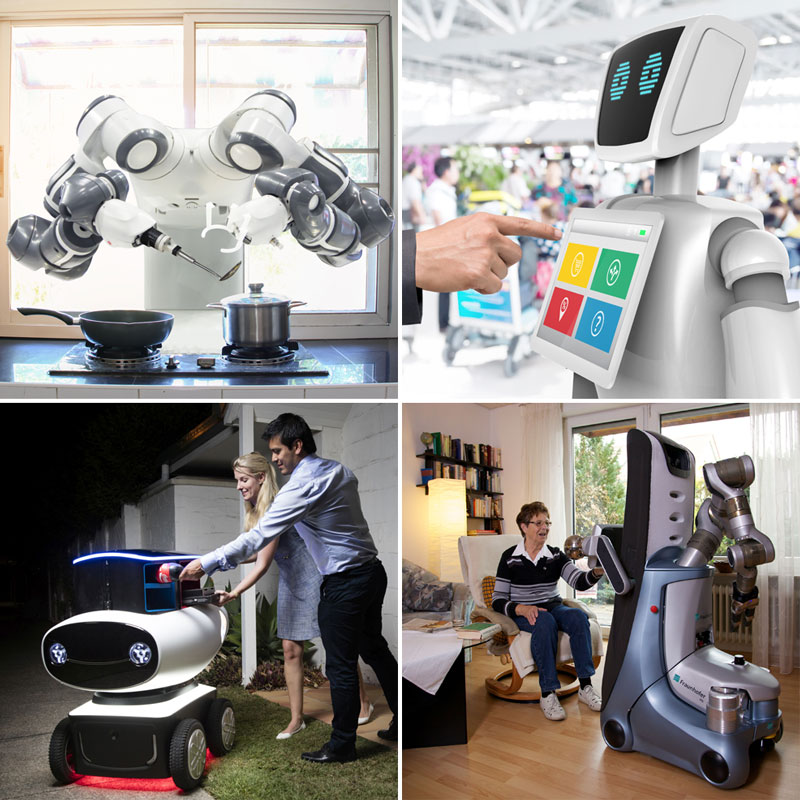
Image credits: Domino's Pizza / Kniff Projektagentur GbR / Fraunhofer IPA
NASA's Dragonfly spacecraft lands on Titan
Dragonfly is the fourth mission in NASA's New Frontiers program, chosen by the agency in June 2019. Launched to Saturn in 2026, it arrives on the surface of its large moon Titan in 2034.
The probe, weighing approximately 450 kg (990 lb), lands by parachute in the equatorial "Shangri-La" dune fields, which are terrestrially similar to the linear dunes in Namibia in southern Africa and offer a diverse sampling location. NASA's mission planners analyse many years of earlier Cassini data to choose a calm weather period, along with a safe initial landing site and scientifically interesting targets.
Dragonfly consists of a rotorcraft lander, much like a large quadcopter with double rotors – an octocopter. Its redundant configuration enables it to tolerate the loss of at least one rotor or motor. The craft performs vertical takeoffs and landings (VTOL) and controlled flights between locations, powered by a radioisotope thermoelectric generator (RTG). It can travel at 36 km/h (22 mph) or about 10 m/s and rise to an altitude of 4 km (2.5 miles). The craft is designed to operate at temperatures averaging −179.2 °C (−290.5 °F).
Taking advantage of Titan's dense atmosphere and low gravity (requiring 38 times less power than Earth-based flight), Dragonfly explores dozens of locations across the icy world, covering a total of 175 km (109 miles) over a three-year period. It samples and measures the compositions of its organic surface materials to characterise the habitability of Titan's environment and investigate the progression of prebiotic chemistry. The primary mission target is the huge Selk crater, produced by an impact large enough to have melted Titan's water-ice crust and liberate oxygen in the distant past.
The craft remains on the ground during Titan's nights, which last 192 hours, or eight Earth days. Activities during the night include seismological studies and meteorological monitoring, sample analysis and local microscopic imaging using LED illuminators. It communicates directly to Earth – more than a billion kilometres away – using a high-gain antenna, with a transmission delay of 79 minutes. In addition to spectrometers, meteorological sensors and a seismometer, the scientific payload includes high-resolution panoramic cameras to image Titan's terrain and scout for scientifically interesting landing sites.
The Laser Interferometer Space Antenna (LISA) is launched
The Laser Interferometer Space Antenna (LISA) is a gravitational wave observatory launched by the European Space Agency.** This project is one of three L-class (Large) missions in the "Cosmic Vision" programme – which also includes the Jupiter Icy Moon Explorer (JUICE) launched in 2023* and the Advanced Telescope for High-ENergy Astrophysics (Athena) deployed in 2037.*
LISA is designed to sense gravitational waves – tiny ripples in the fabric of space-time – with extreme precision. Three spacecraft are placed in a triangular formation with 2.5 million kilometre sides, flying along an Earth-like heliocentric orbit. Laser interferometry is used to monitor fluctuations in the relative distances between them, with a resolution of just 20 picometres (20 trillionths of a metre, or smaller than a helium atom).*
To eliminate non-gravitational forces such as light pressure and solar wind on the test masses, each spacecraft is constructed as a zero-drag satellite and effectively "floats" around the masses, using capacitive sensing to determine their relative position, with ultra-precise thrusters to remain properly centred at all times.
Previous searches for gravitational waves in space were conducted for short periods by planetary missions with other primary objectives (such as Cassini–Huygens), using microwave Doppler tracking to monitor fluctuations in the Earth-spacecraft distance. By contrast, LISA is a dedicated mission using laser interferometry to achieve a much higher sensitivity. Other antennas had been operational on Earth, but their sensitivity at low frequencies was limited by the largest practical arm lengths, seismic noise, and interference from nearby moving masses.
Passing gravitational waves alternately squeeze and stretch objects by a tiny amount. These waves are caused by energetic events in the Universe, such as massive black holes merging at the centre of galaxies; black holes consuming small compact objects like neutron stars and white dwarfs; supernova star explosions; remnants from the very early phase of the Big Bang and possibly theoretical objects like cosmic strings and domain boundaries.
Since LISA is the first dedicated, space-based gravitational wave detector, the mission adds a whole new sense to our perception of the Universe – enabling astronomers to "hear" events in ways not possible before and revealing many important phenomena that were previously invisible.
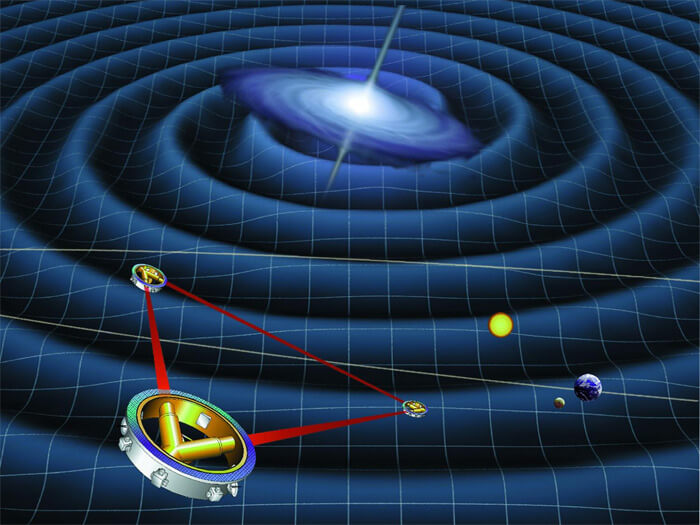
EnVision makes orbital insertion at Venus
EnVision is a spacecraft developed by the European Space Agency (ESA) to study Venus. ESA selected EnVision in 2021 as the fifth Medium-class mission for its Cosmic Vision plan. Launched in 2031, it takes 15 months to reach the planet and a further 16 months to achieve orbit circularisation via aerobraking.*
The probe is designed to help scientists understand the relationships between Venus' geological activity and the atmosphere, potentially finding clues as to why Venus and Earth took such different evolutionary paths. It determines the level and nature of current activity, reveals the sequence of geological events that generated its range of surface features and confirms whether Venus once had oceans or was hospitable for life. It provides new knowledge of the organising geodynamic framework that controls the release of internal heat from the planet. The probe's altitude ranges from 220 to 470 km and the mission has a duration of 4.5 years.
Three instruments are included, plus a radio science experiment. The Venus Synthetic Aperture Radar (VenSAR) enables several imaging and ranging techniques at spatial resolutions as fine as 10 metres. It characterises structural and geomorphic evidence of multi-scale processes that shaped the geologic history of Venus and reveals current volcanic, tectonic, and sedimentary activity. A second instrument, the Venus Subsurface Radar Sounder (SRS), penetrates the top kilometre of the subsurface, looking for underground layering and buried boundaries. This includes impact craters and their infilling, tesserae and their edges, lava flows and their edges, plains, and tectonic features, in order to uncover stratigraphic relationships at various depth ranges and horizontal scales. The third instrument, Venus Spectroscopy Suite (VenSpec), provides compositional data on rock types, extremely high-resolution atmospheric measurements, detailed monitoring of sulphurous gases, and scanning of the mysterious UV absorber in the Venusian upper clouds.
In addition to its three main instruments, a gravity and radio system maps Venus' gravity field in high resolution, allowing its deep internal structure to be probed and confirming the size and current state of the core. It also measures atmospheric properties through radio occultation.
EnVision is the latest in a series of probes to study Venus in recent years – the others being Russia's Venera D surface lander, as well as NASA's VERITAS and DAVINCI+ missions – greatly improving the scientific knowledge of this planet.
MBR Explorer lands on asteroid 269 Justitia
Following the success of its Mars mission in 2021 and a subsequent flyby of Deimos in 2023, the United Arab Emirates Space Agency (UAESA) turned its attention to the main asteroid belt between Mars and Jupiter.
In 2023, it proposed the MBR Explorer, named after the Prime Minister and ruler of Dubai, Mohammed bin Rashid Al Maktoum. The uncrewed spacecraft would be launched in 2028 and undertake a highly ambitious mission to explore a total of seven asteroids, encompassing a journey of 5 billion kilometres.
The probe used gravity assists from several planets along the way to save on fuel. It began close-range studies in 2030, passing by six asteroids, all with different compositional types – 10253 Westerwald, 623 Chimaera, 13294 Rockox, 88055, 23871, and 59980.
The MBR Explorer includes four scientific instruments to study the geology, composition, and structure of the asteroids. These are a high-resolution camera, thermal infrared camera, mid-wavelength spectrometer, and infrared spectrometer. It travels at up to 33,000 km per hour (20,500 miles per hour) and passes within 150 km (93 mi) of each target.
In 2034, the seventh and final asteroid is visited. Known as 269 Justitia, this body is similar in size to 623 Chimaera, with a diameter of 53.6 km (33.3 mi) and rotates once every 33 hours. It has an unusually red colour, due to tholins – similar to trans-Neptunian objects – and is therefore believed to have formed in the outer Solar System before ending up in the main belt. Tholins are organic compounds, which if combined with water can be raw materials for prebiotic chemistry leading to life. This makes 269 Justitia an intriguing target for study. In addition to passing over the asteroid, the mission attempts a surface exploration with a small lander, deployed from the main craft.
Overall, the MBR Explorer builds on the achievements of the earlier Mars mission and significantly boosts the reputation of the UAE as an emerging player in the space industry. It leads to an improved understanding of the Solar System's foundation and the presence and origins of the building blocks of life found in the asteroid belt. It also collects information potentially useful in mining asteroids for resources in the future.*

Saudi Arabia hosts the FIFA World Cup
The 25th FIFA World Cup is held in Saudi Arabia in 2034, with 48 teams competing. FIFA, the international governing body, had restricted the hosting eligibility to Asia or Oceania, as part of its confederation rotation policy. This followed its decision to host the previous World Cup (2030) on three continents – Africa, Europe, and South America.
Initially, more than a dozen countries had expressed an interest in hosting the 2034 tournament, which included a number of joint bids, but most either failed to meet the deadline or withdrew entirely.
On 31st October 2023, Football Australia issued a statement cancelling their bid, leaving Saudi Arabia as the sole candidate. The FIFA President subsequently confirmed that Saudi Arabia had won. As host nation, this also meant they qualified automatically for a place among the 48 teams.
The host cities include Riyadh and Jeddah, with a number of stadiums being upgraded to accommodate higher seating capacities. Much of the infrastructure is now powered by vast solar arrays, part of an ongoing diversification of energy sources away from oil and gas. The recent fulfilment of Saudi Vision 2030 is also showcasing the country's commitment to development and innovation.
The 2034 World Cup is controversial, however, due to Saudi Arabia's record on human rights and other issues. Critics accuse its government of using the games as a form of "sportswashing" to detract from these long-standing reputation problems.* Like the earlier 2022 World Cup held in Qatar, concerns are also raised over the extreme temperatures in the region.

Australia has fully decarbonised its electricity supply
By 2034, virtually all of Australia's electricity is supplied from renewable energy sources, such as solar, wind, biomass and hydro-power.* For many years, Australia had struggled to break its addiction to fossil fuels. The coal industry, in particular, held enormous sway over the political system. PM Tony Abbott, describing coal as "good for humanity", insisted it would be the "world's main energy source for decades to come." He was followed by Malcolm Turnbull who, although promising to take climate change seriously, did little to alter the status quo. Turnbull was succeeded in 2018 by Scott Morrison, a fanatical lover of coal, who had once mocked the opposition by bringing a lump of coal into the debating chamber.
Coal production in Australia increased substantially at the dawn of the 21st century – growing by 80% between 2000 and 2015. Australia was the biggest net exporter of coal in the mid-2010s, accounting for 32% of global exports (389 Mt out of 1,213 Mt total) and employing 50,000 people. The enormous Carmichael coal mine was proposed in the northeast of the country, a megaproject that was expected to produce 2.3 billion tonnes of coal over 60 years. This drew immense controversy about its claimed economic benefits, financial viability, plans for government subsidy and damaging environmental impacts. Alongside its potential harm to the nearby Great Barrier Reef (through dumping of dredge spoil), concerns were raised about groundwater pollution and the clearance of threatened species at the site, including koalas. Furthermore, the vast amount of carbon emissions, from this single mine alone, would be around 0.5% of the worldwide carbon budget limit for avoiding 2°C of warming. Nevertheless, the project continued to move forward, receiving billions of dollars in government assistance.
Carmichael was just the first of a number of large mines proposed for the Galilee Basin and was intended to facilitate their development too. Australia had experienced record growth in coal exports, with its largest importers being Japan (34%), China (24%), South Korea (15%) and India (14%). Much of the remaining glut of coal was consumed domestically, accounting for nearly 50% of Australia's electricity supply in 2015. The country was among the highest of the developed nations in terms of carbon footprint per capita.
However, the world was changing fast; in particular, with regards to energy production. Australia was not immune to the revolution now underway and faced losing billions of dollars in stranded assets. Early warning signs had provided a glimpse of what was to come – such as the auctions held in India, during which solar-generated electricity became cheaper than coal.* This had followed earlier reports that international coal projects relying on new import markets faced major financial risks.* Even when the costs of storage (to make intermittent power sources reliable) were added, renewable energy was becoming Australia's cheapest energy option.*
These changes had become more and more obvious in the late 2010s and continued into the 2020s. Between 2018 and 2019 the nation installed over 10,400MW of new renewable energy, helped by Australia's superb geographical placement and high level of solar irradiance. The accelerating trends in solar and wind power were accompanied by a corresponding decline in coal production, as mines and power stations proved to be economically unviable, either shutting down or being mothballed indefinitely. Renewables were even beginning to match the wholesale price of gas in Australia, meaning that solar-generated electricity could directly compete for provision of industrial heat.
By 2026, renewables had overtaken fossil fuels when measured by terawatt-hours (TWh) and were supplying 50% of Australia's electricity. The large-scale exposure of investors to stranded assets was producing a "carbon bubble" with major economic repercussions – particularly for Australia, but also many other countries around the world. As the plunging value of fossil fuels became apparent, the bursting of this bubble created one of the largest economic crises of the first half of the 21st century.* This setback was only temporary, however, as the world transitioned to a clean energy future. By 2034, renewables are supplying essentially all of Australia's electricity.*
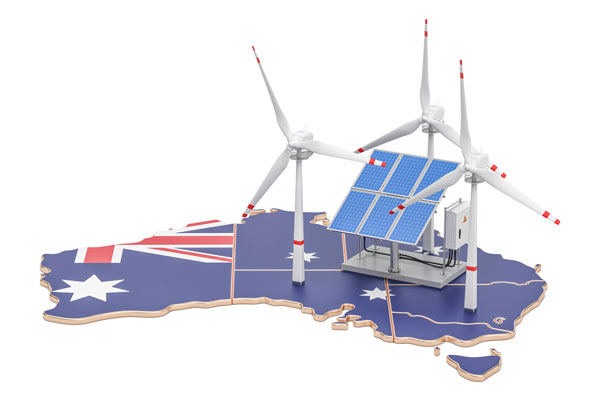
Switzerland phases out nuclear energy
After the Fukushima disaster in Japan, questions were raised about the long-term viability of nuclear power. Switzerland was among the nations to abandon this form of energy production, following public protests and a government review. The country’s five existing reactors – supplying about 40% of the country's power – were allowed to continue operating, but were not replaced at the end of their life span. The last plant is taken offline in 2034.*
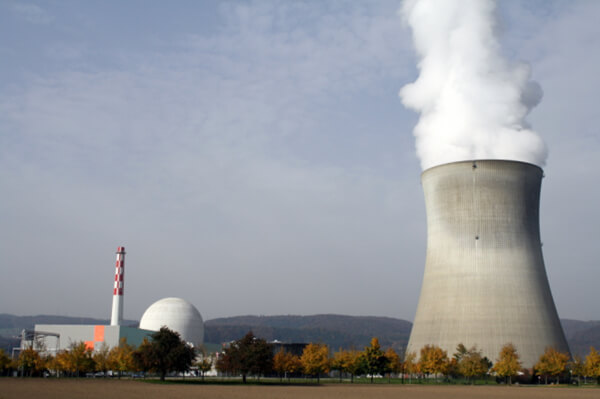
A nuclear power
station with a cooling tower in Leibstadt, Switzerland.
Caribbean coral reefs are in danger of being wiped out
Often called "rainforests of the sea", coral reefs form some of the most diverse ecosystems on Earth. Historically, they have occupied less than 0.1% of the world's ocean surface – about half the area of France – yet provided a home for 25% of all marine species. Delivering a range of ecosystem services to tourism, fisheries and shoreline protection, the global economic value of coral reefs at one time was estimated at up to $375 billion each year.*
However, coral reefs are fragile ecosystems, partly because they are so sensitive to water temperature. In the early 21st century, they were under threat from climate change, oceanic acidification, blast fishing, cyanide fishing for aquarium fish, sunscreen use, overuse of reef resources, and harmful land-use practices; including urban and agricultural runoff and water pollution, harming reefs by encouraging excess algal growth.
The Caribbean – home to 9% of the world’s coral – saw a 50% decline between 1970 and 2012, leaving just one-sixth of the pre-industrial reef cover. According to a detailed analysis in 2014, virtually all of the remaining Caribbean coral reefs would disappear within 20 years, based on current trends.* Climate change had once been seen as the main culprit, lowering the pH level and causing bleaching. While ocean acidification was still a serious threat, new data suggested that a loss of parrotfish and sea urchin – the area’s two main grazers – was, in fact, the biggest driver of coral decline in this particular region.
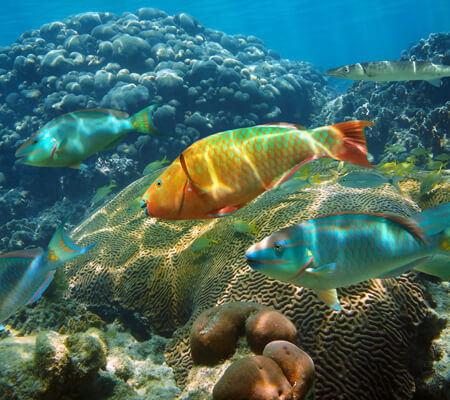
For example, an order-of-magnitude increase in bulk shipping during the 1960s-70s introduced pathogens and invasive species near the Panama Canal that later spread to the Caribbean. An unidentified disease led to a mass mortality of the sea urchin in the 1980s, while extreme overfishing brought parrotfish to the brink of extinction in some regions. Loss of these species broke the delicate balance of coral ecosystems and enabled algae – on which they fed – to smother the reefs. Areas protected from overfishing, as well as other threats such as pollution, tourist activity and coastal development, were more resilient to pressures from climate change.
Some of the healthiest coral reefs, with high populations of grazing parrotfish, included the Flower Garden Banks National Marine Sanctuary in the northern Gulf of Mexico, Bermuda and Bonaire, all of which banned or restricted fishing practices that harmed the fish. Reefs where the parrotfish were not protected suffered tragic declines – such as Jamaica, the entire Florida Reef Tract from Miami to Key West, and the U.S. Virgin Islands.
Attempts were made in subsequent decades to protect these species across a wider area, and restore the balance between algae and coral using better management strategies. Although some of these efforts achieved modest success, short-term economic pressures and business interests tended to outweigh these concerns. The region as a whole remained under serious threat, and by 2034, Caribbean coral reefs have edged further towards complete collapse.*
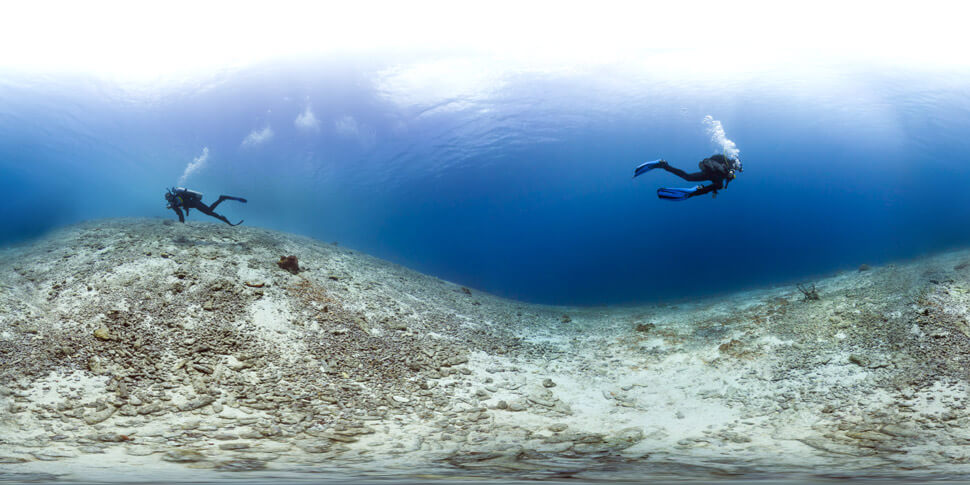
Coral reef dead zones in the Caribbean. Credit: Catlin Seaview Survey
Coastal erosion has destroyed hundreds of UK homes
Rising sea levels and increased storm intensity have begun to seriously affect the British coastline. By the mid-2030s, more than 800 homes have been lost due to erosion. While mitigation efforts have been stepped up around the country as a whole, these particular homes were deemed too expensive to save, resulting in their occupants being forced to abandon them and settle elsewhere, with little or no government compensation. During especially stormy years, up to 7 metres (23 ft) of land is being eaten away per year in some places* – the highest rate in Europe. The most at-risk areas include Devon, Cornwall, the Isle of Wight, Yorkshire and East Anglia. As well as buildings, the shrinking coastline has affected farmland, nature reserves and nuclear power plants, along with a nationwide public footway established in the previous decade.* Towards the end of this century, the number of homes being lost will increase more than eight-fold to 7,000. If no action were taken, the figure would grow 90 times higher, from 800 to 74,000.*

A major supermoon occurs
A so-called "supermoon" occurs when a full moon coincides with a lunar perigee – the closest approach of the Moon in its elliptical orbit around Earth. Such events produce the largest apparent size of the lunar disk as seen from Earth, making it appear 15% larger and 30% brighter than during apogee (its most distant point from Earth). This provides great opportunities for astronomers and photographers. Particularly dramatic supermoons occur when a full moon and lunar perigee also happen when Earth is at perihelion (its closest point to the Sun for the year).
On the morning of 14th November 2016, the distance between the centre of the Moon and Earth was 221,524 miles (356,509 km), the closest they had been together during a full moon since 1948. The Moon would not appear this large again until 25th November 2034. The closest supermoon of the century occurs on 6th December 2052. Notable supermoons are also observed in 2070, 2088 and 2098.*
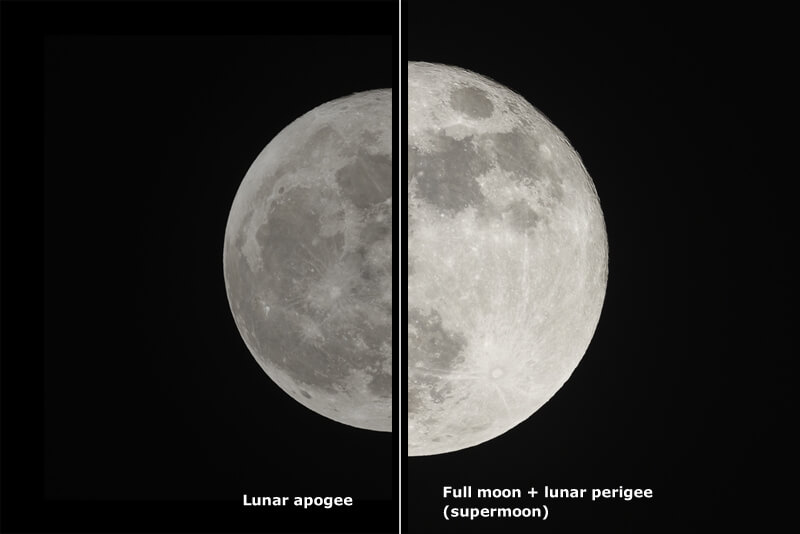
« 2033 |
⇡ Back to top ⇡ |
2035 » |
If you enjoy our content, please consider sharing it:
References
1 The first baby born from a womb transplant, Future Timeline Blog:
https://www.futuretimeline.net/blog/2014/10/4-2.htm
Accessed 18th November 2014.
2 Artificial wombs: is a sexless reproduction society in our future?, IEET:
http://ieet.org/index.php/IEET/more/pelletier20121113
Accessed 18th November 2014.
3 Artificial wombs: is a sexless reproduction society in our future?, IEET:
Archived version: https://web.archive.org/web/20150225001340/http://ieet.org/index.php/IEET/more/pelletier20121113
Accessed 18th November 2014.
4 Artificial Wombs Are Coming, but the Controversy Is Already Here, Motherboard:
http://motherboard.vice.com/read/artificial-wombs-are-coming-and-the-controversys-already-here
Accessed 18th November 2014.
5 Artificial Wombs Are Coming, but the Controversy Is Already Here, Motherboard:
http://motherboard.vice.com/read/artificial-wombs-are-coming-and-the-controversys-already-here
Accessed 18th November 2014.
6 See 2053.
7 Summary of Presentation by Pietro Barabaschi, ITER Director-General, ITER:
https://www.iter.org/doc/www/content/com/Lists/Stories/Attachments/4056/Baseline_Press_Conference_Summary_July-2024_b.pdf
Archived version: https://www.futuretimeline.net/21stcentury/pdfs/iter-2034-timeline.pdf
Accessed 13th July 2024.
8 New baseline to prioritize robust start to exploitation, ITER:
https://www.iter.org/newsline/-/4056
Accessed 13th July 2024.
9 See Personal service robot population, 2000-2050.
10 See Industrial robot population, 1990-2040.
11 See 2025.
12 800 million jobs could be lost to automation by 2030, Future Timeline Blog:
http://www.futuretimeline.net/blog/2017/12/1-2.htm
Accessed 14th March 2018.
13 Future milestones in AI predicted by experts, Future Timeline Blog:
https://www.futuretimeline.net/blog/2017/06/13.htm
Accessed 14th March 2018.
14 Amazon opens hi-tech automated store, Future Timeline Blog:
https://www.futuretimeline.net/blog/2018/01/23.htm
Accessed 14th March 2018.
15 Automated checkouts 'miserable' for elderly shoppers, BBC News:
http://www.bbc.co.uk/news/education-42052234
Accessed 14th March 2018.
16 If the robots take over, here's the country where it probably happens first, CNBC:
https://www.cnbc.com/2017/08/14/japans-aging-population-could-pave-way-for-robots-to-take-over.html
Accessed 14th March 2018.
17 ESA's new vision to study the invisible universe, ESA:
http://www.esa.int/Our_Activities/Space_Science/ESA_s_new_vision_to_study_the_invisible_Universe
Accessed 30th November 2013.
18 European Space Agency sets a path for big space science, BBC:
http://www.bbc.co.uk/news/science-environment-25125672
Accessed 30th November 2013.
19 See 2031.
20 See 2037.
21 The Scale of the Universe 2, htwins.net:
http://htwins.net/scale2/
Accessed 30th November 2013.
22 Europe will join the space party at Planet Venus, BBC News:
https://www.bbc.co.uk/news/science-environment-57416589
Accessed 7th July 2021.
23 United Arab Emirates Announces New Mission to the Asteroid Belt, Sky & Telescope:
https://skyandtelescope.org/astronomy-news/united-arab-emirates-announces-new-mission-to-the-asteroid-belt/
Accessed 14th June 2023.
24 2034 World Cup: Saudi Arabia set to host after Australia does not bid, BBC Sport:
https://www.bbc.co.uk/sport/football/67271423
Accessed 1st November 2023.
25 Australia could be 100% renewable by 2030s, meet Paris targets by 2025, Renew Economy:
https://reneweconomy.com.au/australia-could-be-100-renewable-by-2030s-meet-paris-targets-by-2025-2025/
Accessed 16th September 2018.
26 Solar power is now cheaper than coal in India, Future Timeline Blog:
https://www.futuretimeline.net/blog/2017/05/20.htm
Accessed 16th September 2018.
27 The beginning of the end for imported coal in India, Future Timeline Blog:
https://www.futuretimeline.net/blog/2014/05/16.htm
Accessed 16th September 2018.
28 Renewables are now Australia's cheapest energy option, Future Timeline Blog:
https://www.futuretimeline.net/blog/2017/03/14.htm
Accessed 16th September 2018.
29 Carbon 'bubble' could cost global economy trillions, BBC News:
https://www.bbc.co.uk/news/science-environment-44357243
Accessed 16th September 2018.
30 "Developments in PV and wind both globally and within Australia are happening far faster than public discourse suggests."
See Australia's renewable energy industry is delivering rapid and deep emissions cuts, The Australian National University:
http://energy.anu.edu.au/files/Australia%27s%20renewable%20energy%20industry%20is%20delivering%20rapid%20and%20deep%20emissions%20cuts.pdf
Accessed 16th September 2018.
31 Switzerland
Decides on Nuclear Phase-Out, The New York Times:
http://www.nytimes.com/2011/05/26/business/global/26nuclear.html?_r=4
Accessed 29th May 2011.
32 The value of the world's ecosystem services and natural capital, Nature:
http://www.nature.com/nature/journal/v387/n6630/full/387253a0.html
Accessed 3rd July 2014.
33 Caribbean coral reefs 'could vanish in 20 years', BBC:
http://www.bbc.co.uk/news/science-environment-28113331
Accessed 3rd July 2014.
34 Caribbean Coral Reefs - Status Report 1970-2012, IUCN:
http://cmsdata.iucn.org/downloads/caribbean_coral_reefs___status_report_1970_2012.pdf
Accessed 3rd July 2014.
35 'Shrinking Britain' will force land to be abandoned to the sea, The Guardian:
http://www.theguardian.com/environment/damian-carrington-blog/2011/may/05/uk-coast-flood-tsunami-nuclear
Accessed 1st January 2015.
36 England Coast Path to be completed by 2020, National Trust:
http://www.nationaltrust.org.uk/article-1355857168422/
Accessed 1st January 2015.
37 Almost 7,000 UK properties to be sacrificed to rising seas, The Guardian:
http://www.theguardian.com/environment/2014/dec/28/7000-uk-properties-sacrificed-rising-seas-coastal-erosion
Accessed 1st January 2015.
38 Closest supermoon since 1948!, EarthSky:
http://earthsky.org/tonight/closest-supermoon-since-1948
Accessed 14th November 2016.
![[+]](https://www.futuretimeline.net/images/buttons/expand-symbol.gif)






